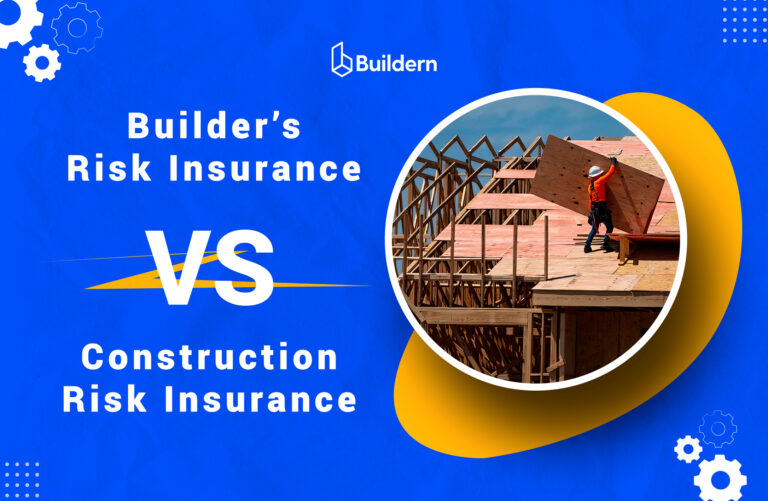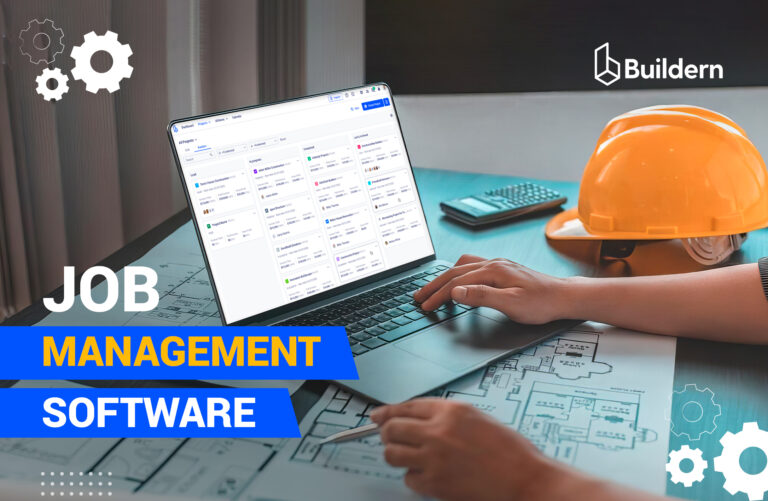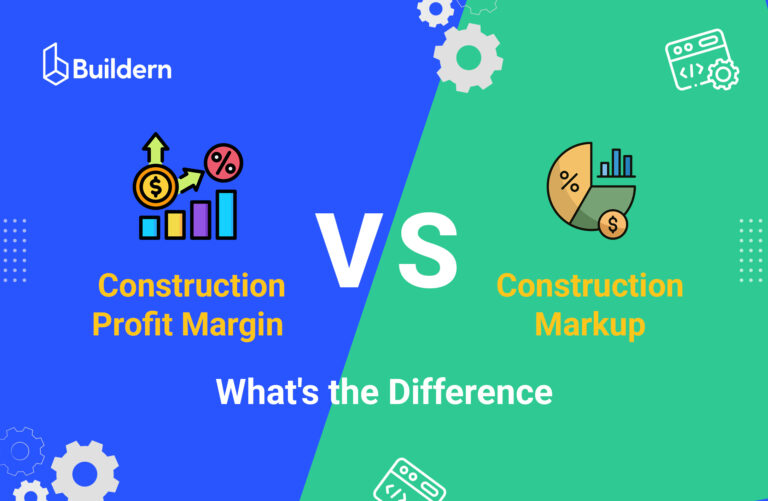8 Construction Subcontractor Management Tips To Improve Productivity

Have you ever faced project delays due to subcontractors’ issues? This can happen to any general contractor.
While it’s easy to place the blame on construction subs, the problem often results from poor management. In many cases, delays happen not because other workers fail to do their job, but because general contractors fail to coordinate their efforts effectively.
If a builder lacks the skills to choose the right hires and to manage their work properly, construction rework is almost inevitable. However, there are numerous ways to improve the process, including the construction software management tools.
In this article, we will discuss practical subcontractor management tips that can help when choosing the right partners.
Table of Contents
- Who Are Construction Subcontractors?
- Who Is Responsible for Subcontractor Management?
- Main Phases of Subs Management
- 8 Tips for Subcontractor Management
- Conclusion

Who Are Construction Subcontractors?
In the construction industry, subcontractors are specialists hired by a general contractor to perform specific tasks. They are independent tradespeople who handle a particular scope of a construction project.
Subcontractors can be plumbers, electricians, drywallers, painters, roofers, and other workers with similar roles. In addition to doing a specific job, they bring materials, equipment, tools, workforce, and work under a defined contract and budget.
Subcontractor vs. In-House Workers
The difference between subcontractors and in-house teams comes down to structure, control, and payment.
In-house workers are employed directly by the general contractor. They’re on the payroll. They typically follow internal processes and schedules. These are the team members who are a part of the general contractor’s crew and report to the GC or a project manager.
Subcontractors, on the other hand, are more independent. They run their businesses and work with multiple clients. General contractors don’t manage their day-to-day operations. They work according to the scope and timeline that the sides agree to in signing the contract. The contract can be a traditional one or a digital bid request. In this case, the scope of work, the prices, and the necessary materials are negotiated and approved online via the subs and vendors portal.
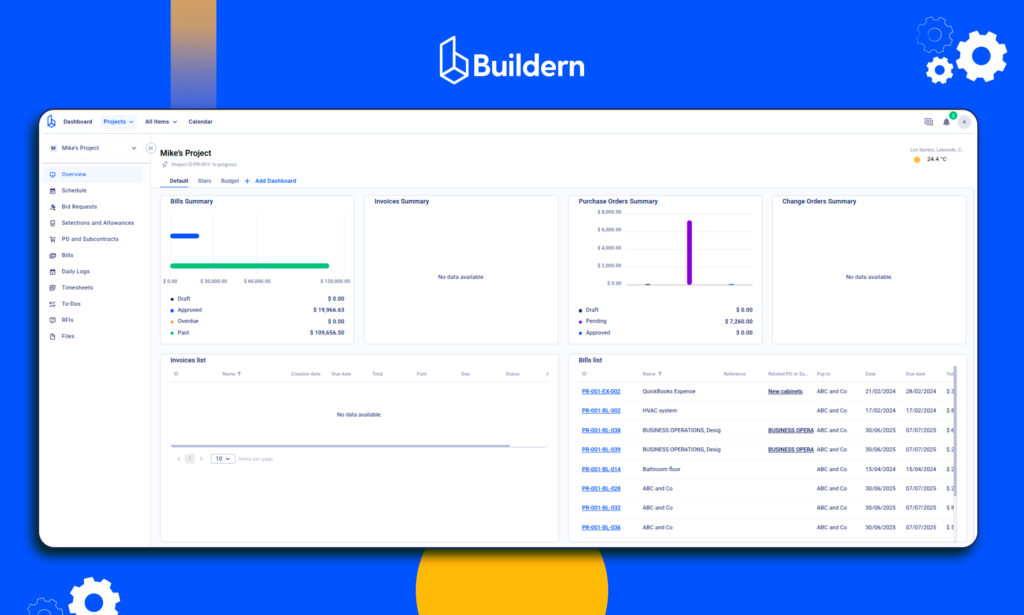
Who Is Responsible for Subcontractor Management?
Most of the time, subcontractors directly report to a general contractor and rarely communicate with clients, as their scope of work is narrower.
The general contractor is responsible for hiring subs, ensuring contract compliance, and maintaining quality and safety standards.
Depending on the size of a company, a project manager also supervises subs. They may be involved in reviewing bids and helping in choosing qualified subcontractors. Besides, the duties include aligning work with the project timeline. Either a general contractor or a project manager ensures that different trades do not overlap.
Types of Construction Subs
There are dozens of subs specialized in performing various specific tasks. Here are the most common subcontractor types and their duties:
Concrete Subcontractor: Pours and finishes concrete for foundations, slabs, sidewalks, and driveways.
Excavation and Earthwork Specialist: Prepares the site, digs foundations, and handles grading or trenching.
Carpenter: Focus on structural framing, cabinetry, and interior woodwork.
Electrician: Responsible for wiring, lighting, generators, electrical panels, and power systems.
Steel and Structural Specialist: Specializes in fabricating and erecting steel frameworks and reinforcements.
Plumber: Installs and maintains water supply systems, drainage, and gas lines.
HVAC Specialist: Installs and services heating, ventilation, and air conditioning systems.
Glazing Subcontractor: Responsible for installing glass windows, curtain walls, and storefronts.
Painting Specialist: Handles interior and exterior painting.
Regardless of the trade, it’s important to manage construction subs properly, so let’s discuss the best practices.
4 Main Phases of Subcontractor Management
There are four main phases of subcontractor management.
Hiring: This is the phase where the general contractor is sourcing subcontractors and sending bid requests to see if they can meet the project needs. During this time, they receive bids, quotes, and proposals from different construction subs.
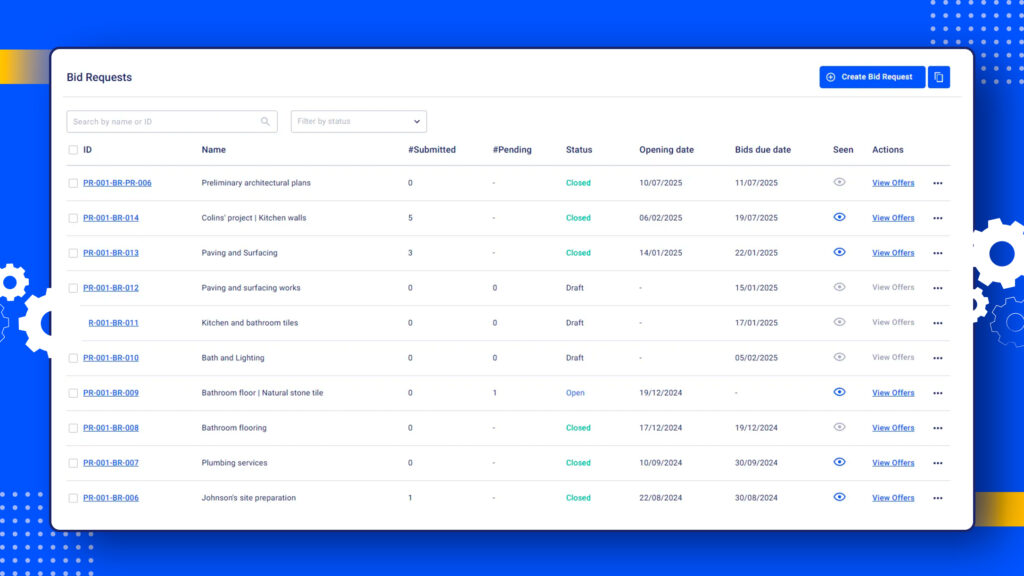
Contract Signing and Onboarding: General contractors outline the contract, set the policies and procedures for subcontractors’ work.
Execution: This is a project delivery phase, which involves general monitoring of the construction project and ongoing communication between general contractors and subcontractors. Closeout: The final phase of a construction project, where all remaining tasks are completed. The general contractor conducts final checkups with subcontractors to ensure that all obligations are fulfilled.

8 Tips for Subcontractor Management
Managing subcontractors effectively is key to delivering projects on time and on budget. Here are 8 practical tips for effective management to ensure a smooth process and avoid costly mistakes.
1. Vet Your Subcontractors
Different projects have specific subcontractors involved. Before hiring construction subs, you need to ensure that they are qualified to perform the required task. If you don’t check it in due time, the risks are delays and budget overrun.
So here is what you should check before hiring your subcontractors:
Previous Projects
Study their previous projects and check a portfolio (if available) for images of their best works. Of course, it might not always be a good idea to ask a plumber to show a portfolio, but a carpenter might have one and be willing to show it off.
Feedback from Colleagues
It’s another thing when a person tells you he can do a great job, and a completely different thing when his colleague tells you that. Of course, the subcontractor you’re hiring will do his best to get the work, so only trusting his own words is not a good idea. Instead, it’s better to ask for feedback from someone he has worked with. They will tell you honestly whether he is qualified for the work or has a lot of room for improvement.
Licenses and Certifications
Each state has different licensing or certification guidelines for construction subs. These certifications usually demand minimum experience requirements and include a written exam in the specified area.
For example, in California, the Contractors State License Board (CSLB) requires all subcontractors working on projects valued at $500 or more to hold a license.
In short, confirm your construction subs qualification, along with all the required certificates and licenses to have legal workers.
Safety Rules
Everyone working in construction knows: the construction field is among the most dangerous workplaces. And although you can do your best to ensure construction site safety. If a subcontractor is not careful enough during their work, this may cause some significant safety issues, putting themselves and other workers at risk.
Insurance
Do your subcontractors have health and liability insurance? Unless there is insurance, a builder will be responsible for any accident at the job site.
2. Ensure Contracts Contain Necessary Details
Even if you’ve worked with a subcontractor before and fully trust them, that handshake deal won’t protect you if they suddenly miss critical deadlines or walk off the job. It’s necessary to have a solid written agreement, not just for legal reasons, but to keep expectations clear on both sides.
But here’s the thing: simply signing a contract isn’t enough. You want your subcontractor agreement to be as detailed as possible. That means outlining exactly what’s expected:
- Timelines and quality standards
- Safety rules
- Payment terms
- Who’s responsible for supervising subs
If you have any non-negotiables, this is the place to list them, as clear expectations from the start will help avoid misunderstandings.
There are also flow-down clauses that include safety standards and deadlines, down to all subcontractors and suppliers. This keeps everyone synced and protects in case someone else’s mistake affects the project.
One of the ways to have a smooth legal process is to use construction management software. You can create and store your subcontractor and supplier agreements in one place, send out bids and RFQs (requests for quotes). The tools enable users to get everything signed electronically.
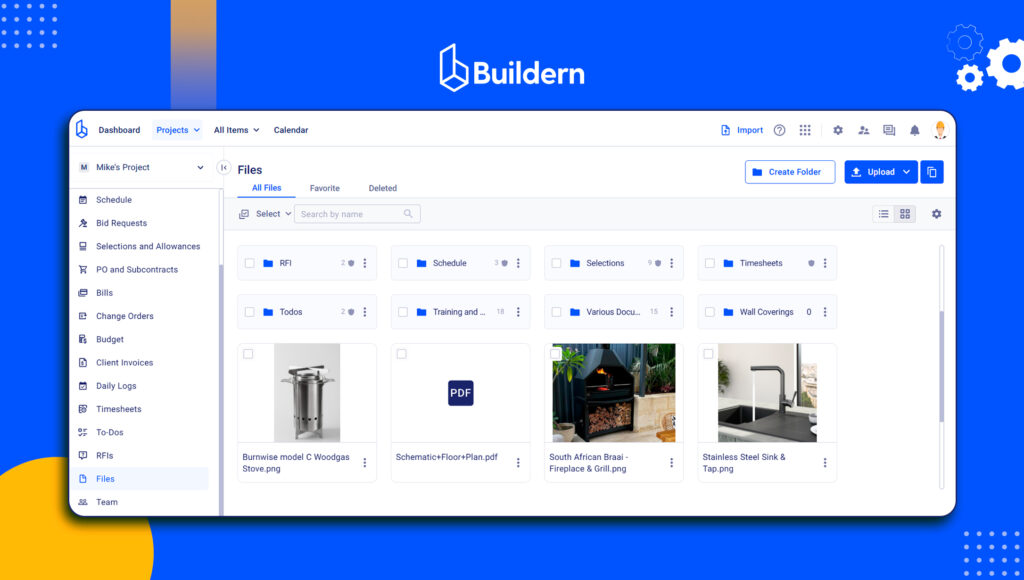
In this case, bid details or in other words, terms of contract can be finalized without in-person meetings and endless email threads.
3. Set Up Open Communication with Subcontractors
Since subcontractors cover a considerable portion of a building firm’s work, it’s essential to ensure there is no miscommunication between the sides.
Either a general contractor or a project manager should inform subcontractors about all changes quickly. So, making communication channels easier is one of the solutions.
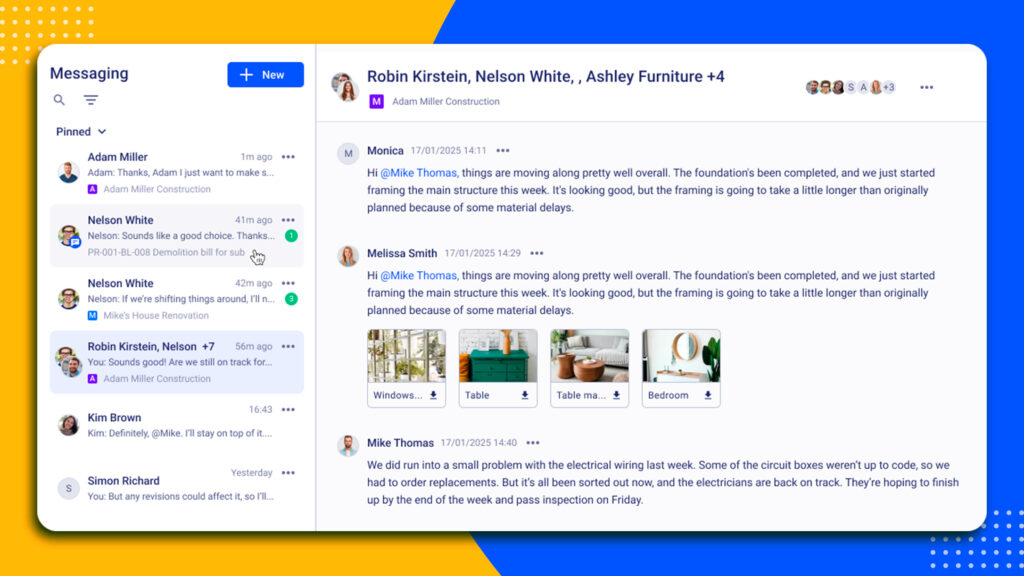
For example, imagine a glazing subcontractor missed an updated window specification as the revised drawing was in one of the email threads. They arrive on-site and begin installing glass units based on the outdated layout. As a result, materials are wasted and reinstallation is needed.
With good software, you can:
- Keep all project discussions, updates, and documents in one space
- Allow @mentions and task-specific comments to direct messages to the right team member
- Store all bids and responses, so you always know who said what and when
- Send instant notifications when there are updates or schedule changes.
This kind of organized communication helps avoid confusion between the GC, project manager, and subs. In the end, you should be able to build a network of subs to have reliable partners for future projects.
4. Set Payment Terms
It’s clear that delayed payments are one of the causes of tension between GC and subs.
Set clear payment timelines from the beginning of the project. Calculating labor cost is a key element for budgeting and bidding. It’s essential to define how soon the sub will be paid after the GC receives payment from the client.
The payments may be different:
- Completion payment: This comes when the entire subcontracted task is over.
- Progress payment: Phases tied to project milestones. The subcontractor is paid when his portion of the work is completed.
- “Pay-when-paid”: This means the subcontractor will receive payment only after the general contractor has been paid by the client or project owner.
There are various automated invoicing tools. GCs can review and release payments faster without long paperwork.
5. Build Strong, Respectful Relationships with Subs
Management of construction subs is about relationships. Treating subs fairly, communicating clearly, and maintaining mutual respect go a long way toward building a network.
Overloading subcontractors with unrealistic demands will affect the entire project. Eventually, the quality of work will suffer, or they will decline to work with you on future projects.
Try to promote a work environment based on trust and transparency.
This includes respecting their time, paying on schedule, being open to feedback, and clearly defining responsibilities.
6. Use Tracking Tools and Timesheets
Another great management tip is to use tracking tools. Many construction companies rely on them to monitor ongoing performance.
Workers and subcontractors can clock in and out through digital timesheets. It becomes much easier to count actual hours worked and match labor costs to specific phases of the project.
Accurate time tracking also plays a crucial role in preventing payroll errors and disputes. With clock-in/clock-out systems, the GC can gain a real-time view of who’s on the job site and for how long. This is especially useful when managing multiple subcontractors across different trades and locations.
Digital timesheets can also be connected to job codes. This enables users to assign hours to specific tasks like framing, glazing, or electrical work.
In addition to simplifying labor management, time tracking tools create transparency between teams.
7. Use Construction Management Software
Choosing the methods of construction project management is up to a general contractor. This also depends on the size of the company and the usual scope of projects. However, there are many options to automate all processes, starting from bidding to timesheets. Software helps manage subcontractors’ schedules, labor requests, assignments, and other data. It is extremely hard to track all of these elements using spreadsheets in the case of multiple projects.
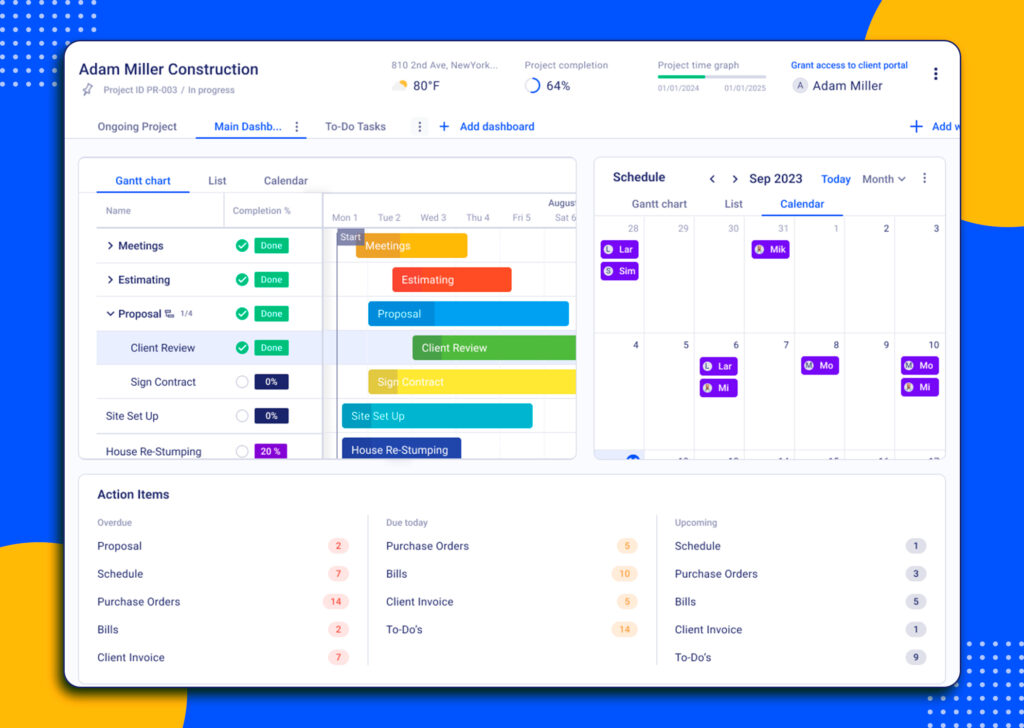
For instance, Buildern provides small yet important elements like using QR codes to see materials or messaging via an app that simplifies daily efforts.
A good software platform will also allow the general contractor and the project manager to quickly and efficiently update the schedule if changes come up.
8. Evaluate Work Based on Client’s Feedback
Finally, once the work is completed, evaluate your subcontractors’ overall performance based on your client feedback.
Ask whether the time spent on the project and the overall quality were worth the price. If you find that all the set criteria were met, save their contacts for future projects.
Conclusion
Subs are one of the most important parts of any construction project. The general contractor is responsible for each phase of the project, involving subs from hiring qualified specialists and setting clear payment terms. Each step plays a role in improving collaboration and boosting productivity.
Therefore, it’s important to choose the best format and tools to get an efficient workflow. Putting the right systems in place, including contracts and communication, can make the difference. It’s easier to avoid delays, stay within budget, and keep the quality high.
At the end of the day, good subcontractor management means fewer surprises and stronger relationships.

